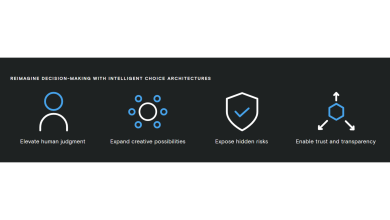
Enterprises have struggled with Shadow IT for decades, including unsanctioned SaaS sign-ups, personal file-sharing, and side-project servers. Shadow AI is the next iteration, and it is both more powerful and more dangerous. When an employee starts using a public LLM or an unvetted AI plugin to speed work, they don’t just add another app; they introduce a living, learning system that consumes and sometimes stores corporate data. Because these tools are easy to access and embedded into everyday workflows, Shadow AI can proliferate quietly and quickly.
The Hidden Dangers of Shadow AI
Shadow AI creates risk vectors that traditional security controls weren’t designed to catch. Unmanaged AI endpoints become invisible ingress and egress points: sensitive files, customer lists, code snippets, or protected health information can be uploaded into third-party models without IT ever seeing it. Governance gaps form when decisions or insights generated by unvetted models are used in customer communications, legal summaries, or product design.
The invisible attack surface grows as these models interact with internal systems, creating new paths for data exfiltration and compliance failures.
Why Shadow AI Is Different and Harder to Detect
Unlike a rogue VM or an unsanctioned SaaS account, AI tools often masquerade as productivity helpers, chat windows inside Slack, new web browsers, browser plugins, or add-ins in word processors. They blend into normal work and scale at human speed.
An engineer pasting a code fragment into an online model, a marketer uploading a customer CSV for segmentation, or a junior lawyer asking a public LLM to summarize client documents all look like routine tasks. Traditional monitoring tools that flag unknown domains or unusual port activity will miss one-click AI usage buried in legitimate apps. Meanwhile, employees tend to view these tools as helpful rather than risky, reducing voluntary reporting.
The Cost of Ignoring Shadow AI
Ignoring Shadow AI has tangible consequences. Intellectual property can leak into externally hosted models and be replicated elsewhere. Regulatory exposure is real, datasets that include personal data risk breaches of GDPR, HIPAA, and other statutes, carrying potential fines and remediation costs.
Beyond regulatory fines, the reputational damage from an AI-related data leak or an AI-made operational error (for example, a bad financial model used to guide trading or customer offers) can erode customer trust and employee morale. The long tail of litigation, remediation, and lost business can far outweigh the short-term productivity gains the rogue tool appeared to provide.
Strategies to Regain Control Without Killing Innovation
Blocking AI outright won’t work: employees will find workarounds, and innovation stalls. The better path is to enable safe, transparent AI adoption:
- Visibility first. Inventory how and where AI is used. Use DNS logs, basic CASB telemetry, and endpoint DLP that specifically recognizes interactions with LLM endpoints and AI platforms. Map data flows so you know which systems and people touch sensitive records.
- Policy and governance, not prohibition. Define acceptable use policies that describe what data may be provided to external models, who can approve exceptions, and how outputs should be validated before use. Tie policy enforcement to identity and role.
- Provide approved alternatives. Give employees vetted, enterprise-grade AI services with guaranteed data handling, retention, and audit logs. When teams have safe, convenient choices, shadow usage drops.
- Automate guardrails. Apply automated controls such as contextual DLP (preventing upload of credit card numbers or customer PII), API-level proxies that sanitize inputs, and automated consent flows for edge cases. Automation keeps controls consistent and scalable.
- Train with real examples. Short, role-specific training modules that show how a single mistaken prompt can leak secrets resonate more than abstract warnings. Pair training with simulated exercises, e.g., red-team prompts that test whether employees would leak data.
Building a Culture of Safe AI Adoption
Sustainable AI governance requires cultural work, not just tech controls. Leaders must communicate that AI is an organizational capability to be used responsibly. That means framing AI use as a shared responsibility: reward teams that report new tools, encourage product owners to pilot and document AI integrations, and celebrate examples where AI was used compliantly to speed outcomes. Avoid punitive approaches that push use underground; empowerment with clear guardrails produces the best adoption and the healthiest risk posture.
Turning Shadow AI into Strategic AI
Shadow AI cannot be eradicated entirely; it’s a symptom of people seeking speed and better outcomes. But with visibility, governance, and enterprise alternatives, those same impulses become assets. Organizations that inventory AI usage, enforce contextual controls, and provide approved tools will unlock productivity while minimizing compliance and security risk. The shift is simple in principle: treat AI access like any other privileged resource, discover it, govern it, secure it, and measure its impact.
Next steps
Begin with a three-week sprint:
(1) Discover and map AI touchpoints via logs and endpoint telemetry;
(2) Publish a short acceptable use policy and immediate controls on high-risk data types;
(3) Deploy at least one enterprise-approved AI solution and run targeted training for high-risk teams.
Combine these actions with a quarterly review cadence to keep pace with the rapidly evolving AI landscape.
Shadow AI won’t disappear overnight. But with proactive visibility, smart governance, and a culture that balances innovation and control, enterprises can turn a silent risk into a strategic advantage.



